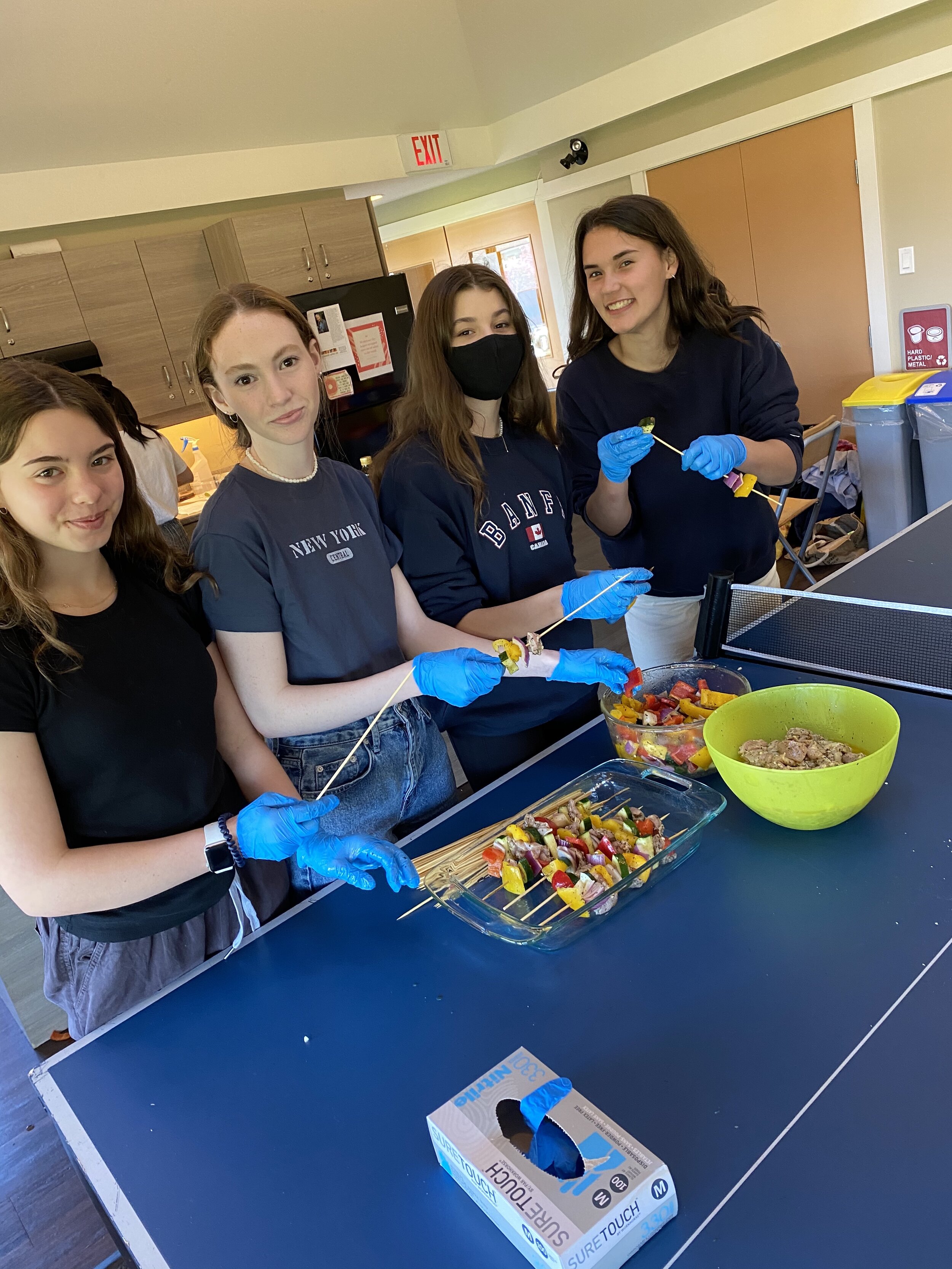

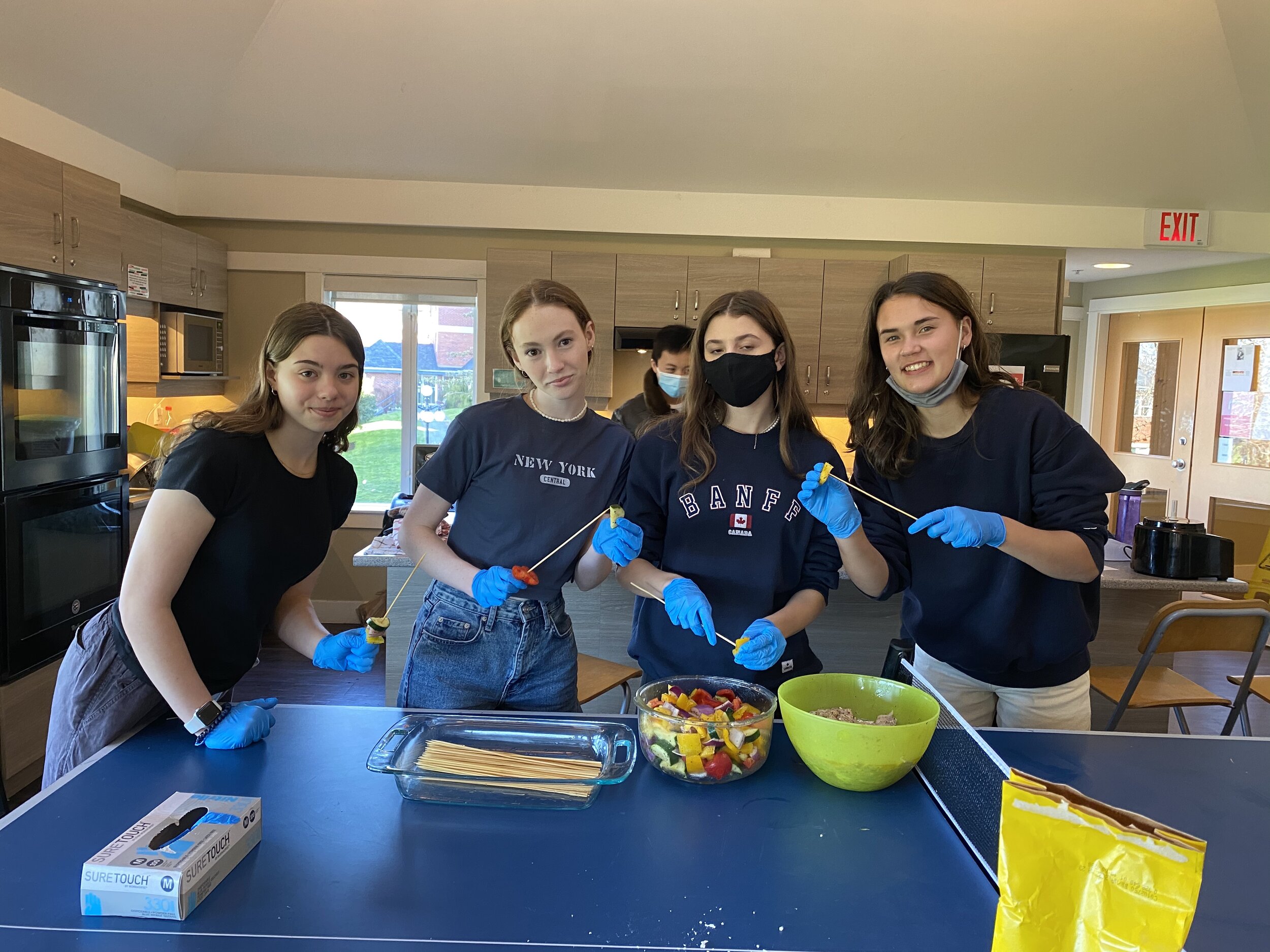

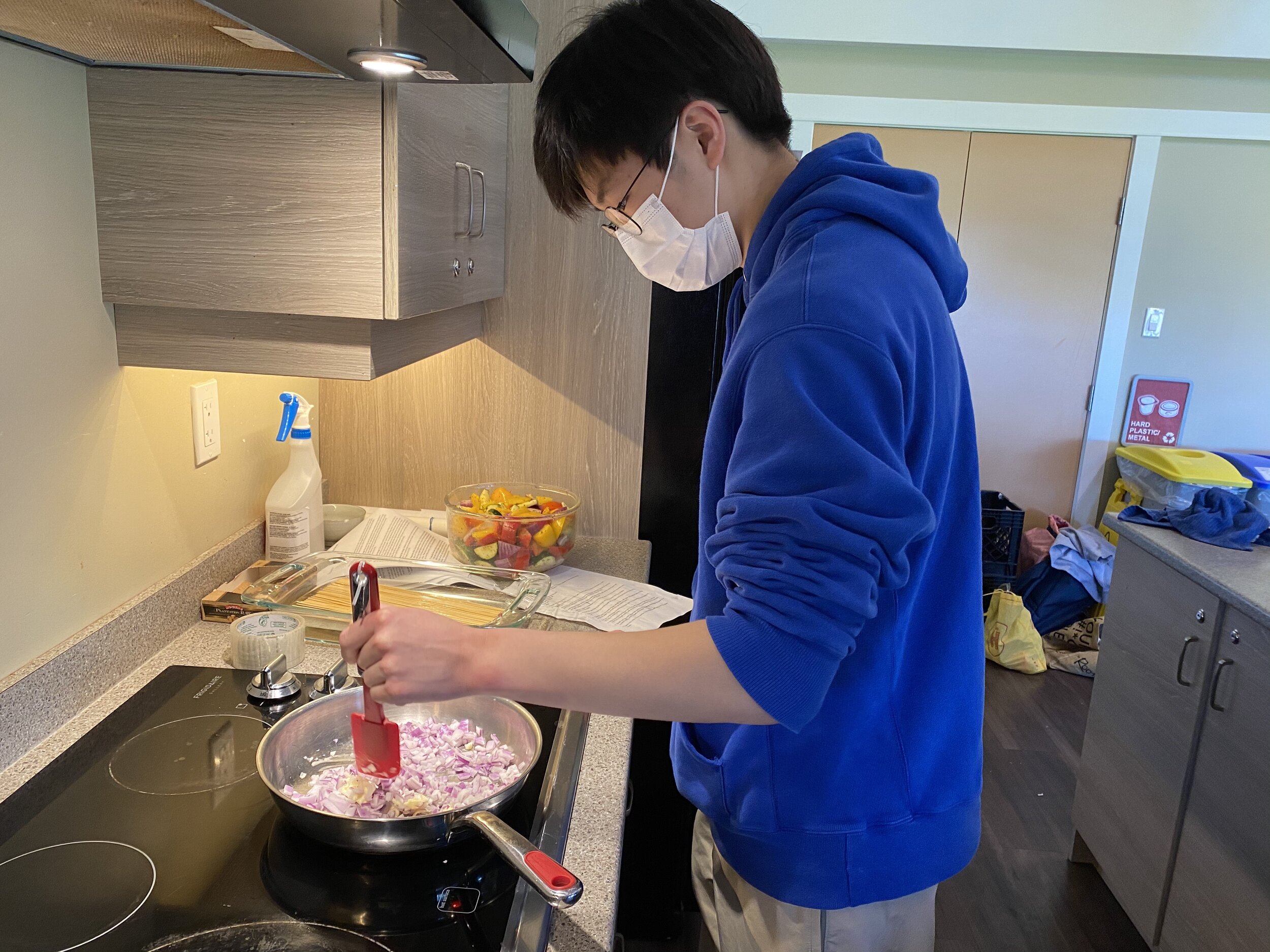
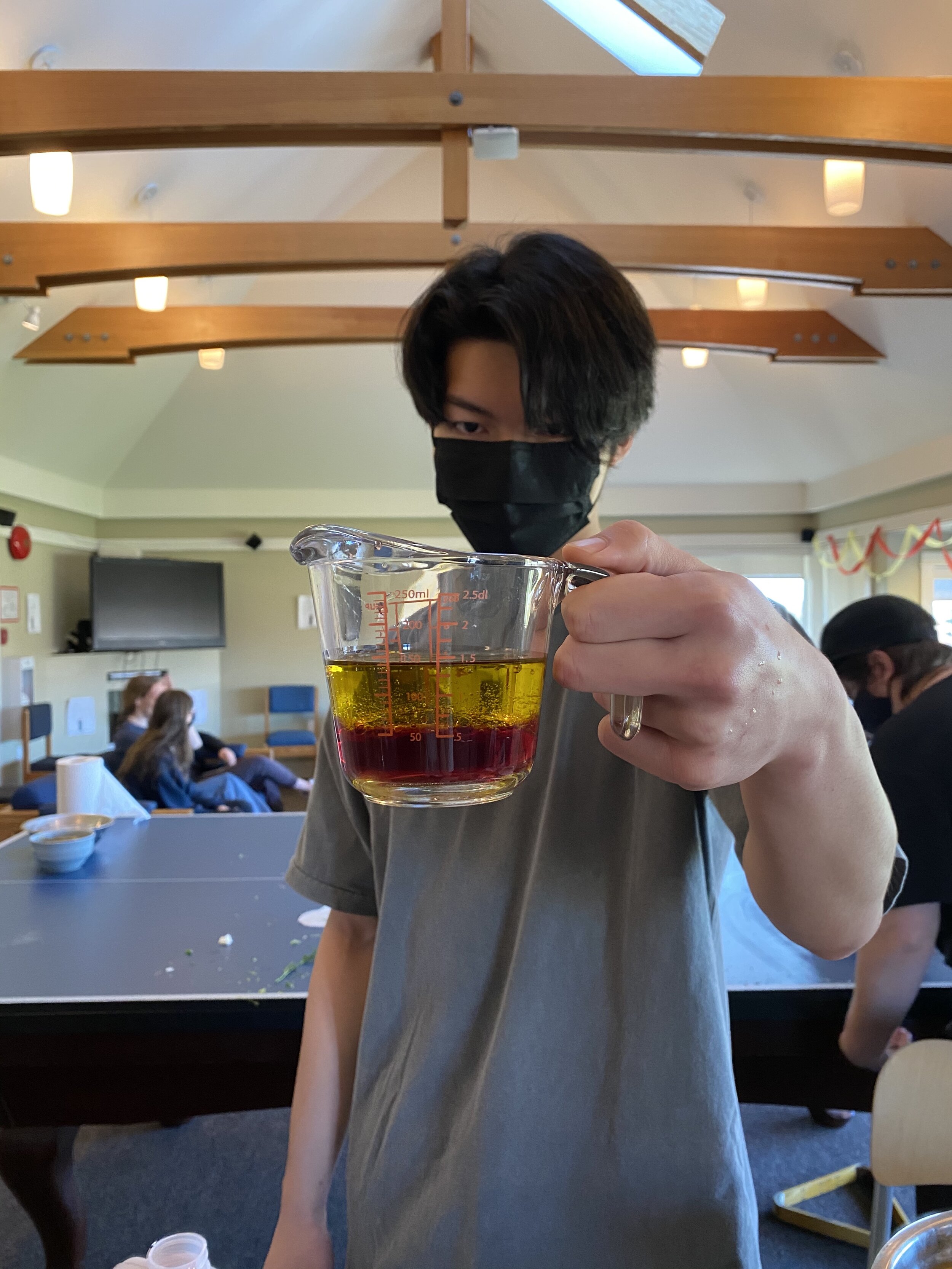
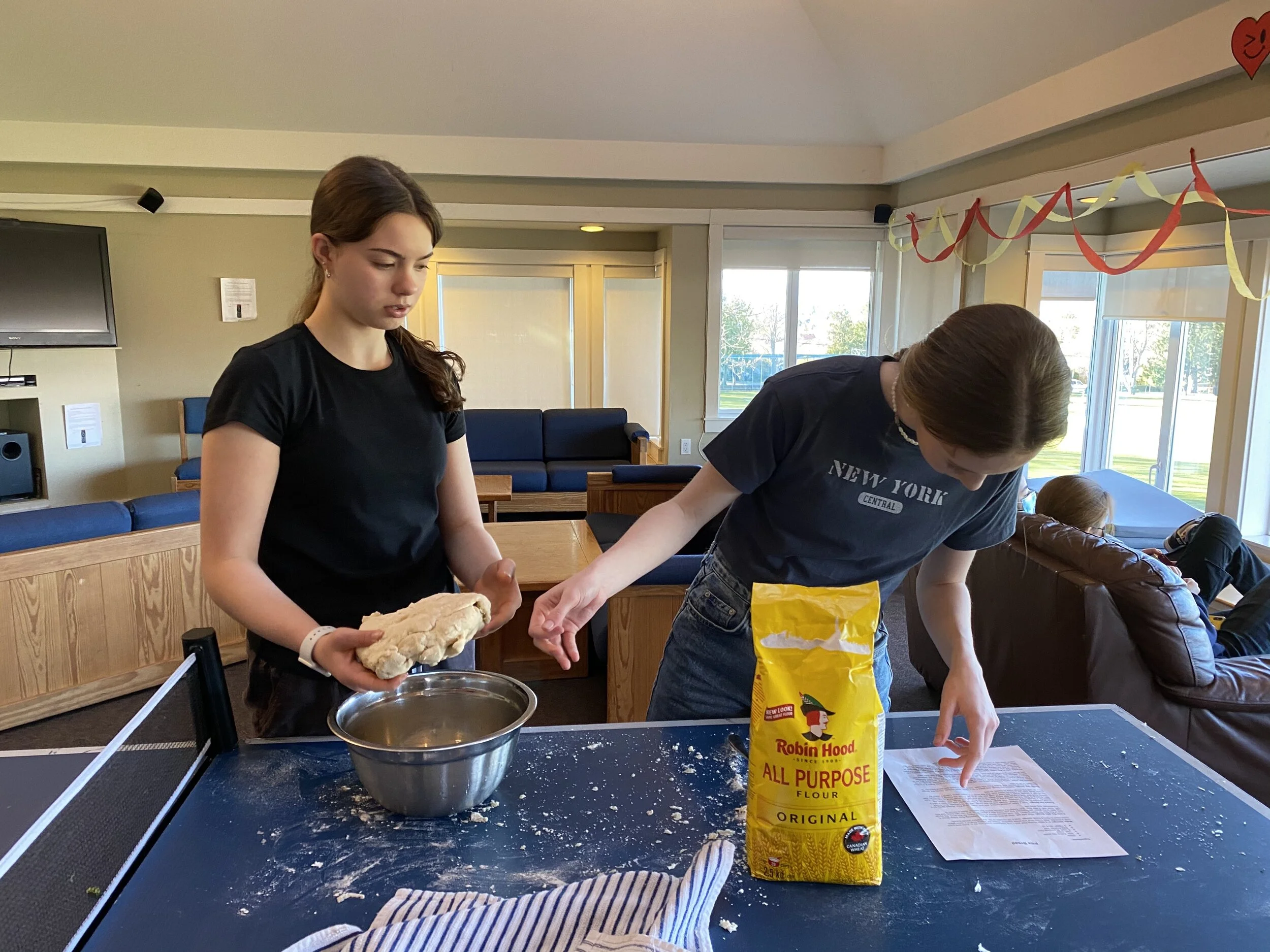
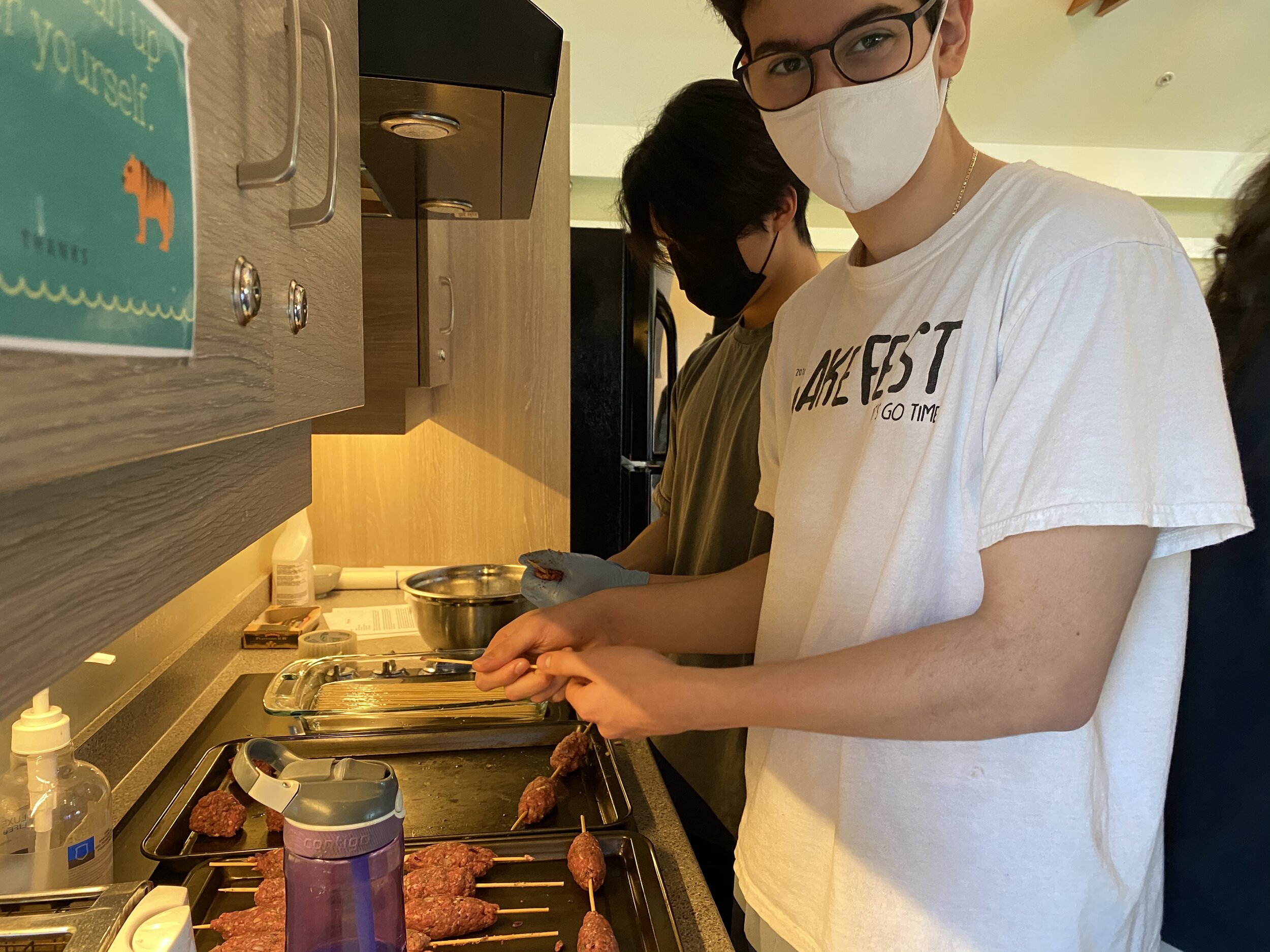
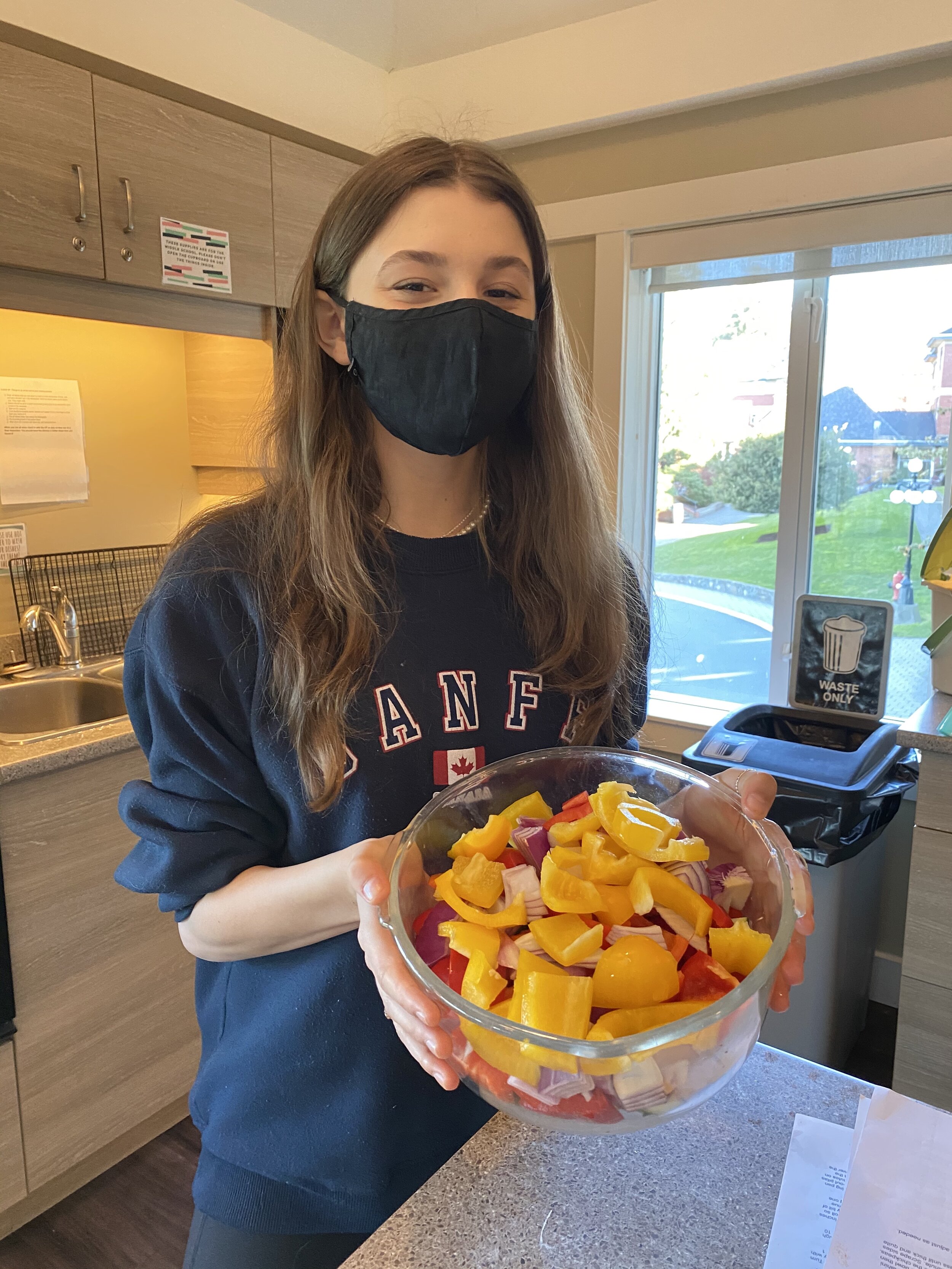
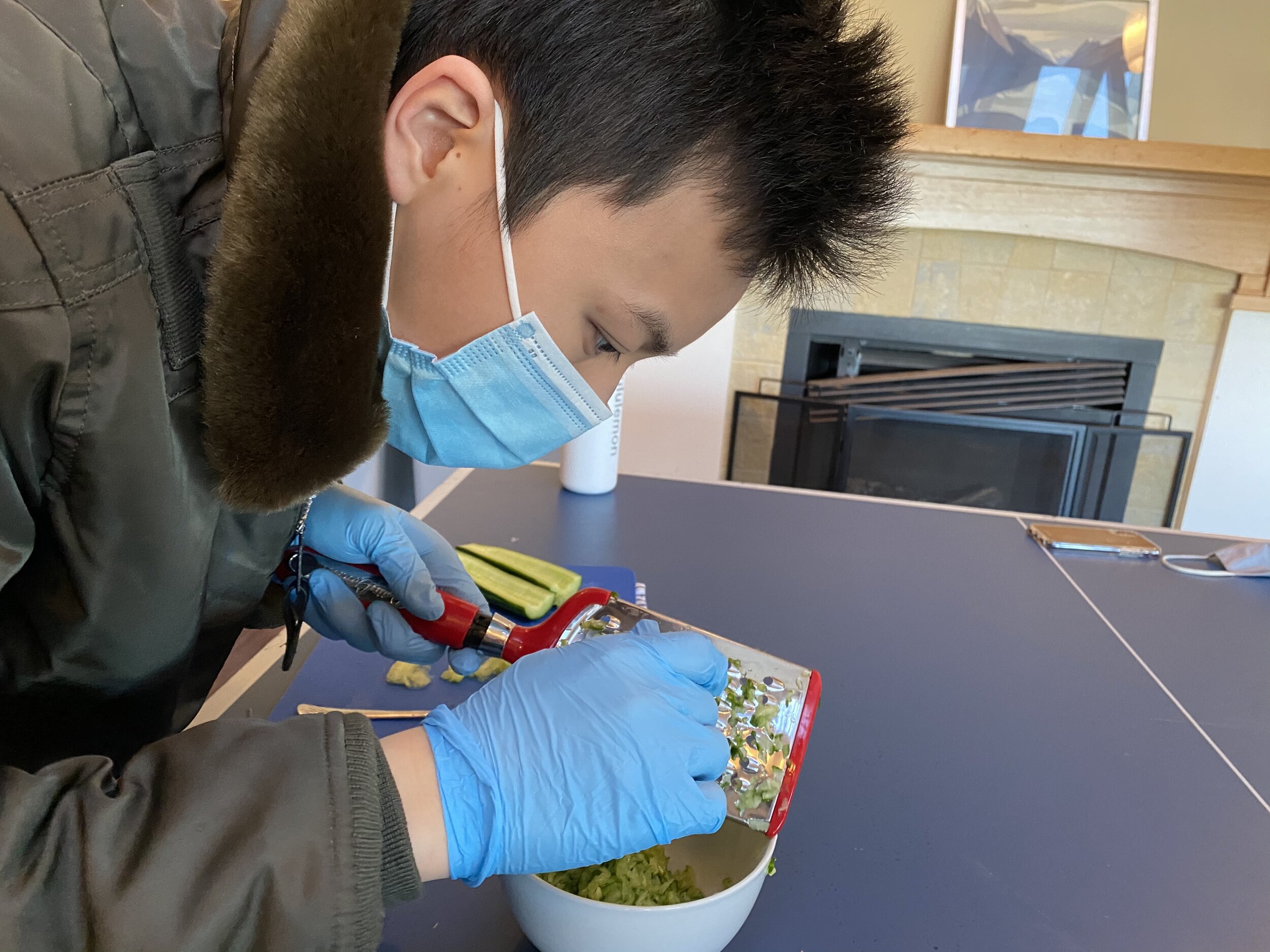
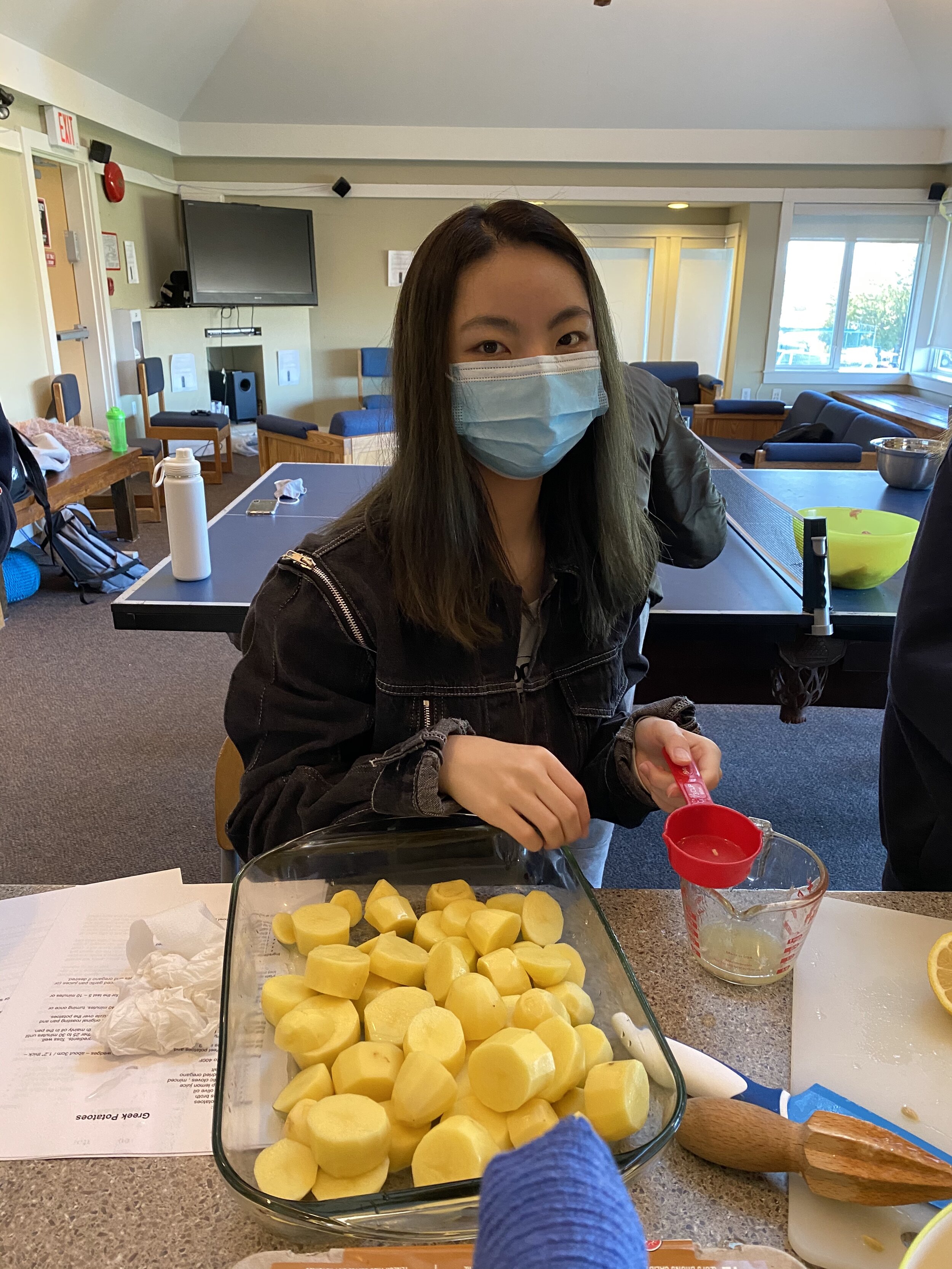
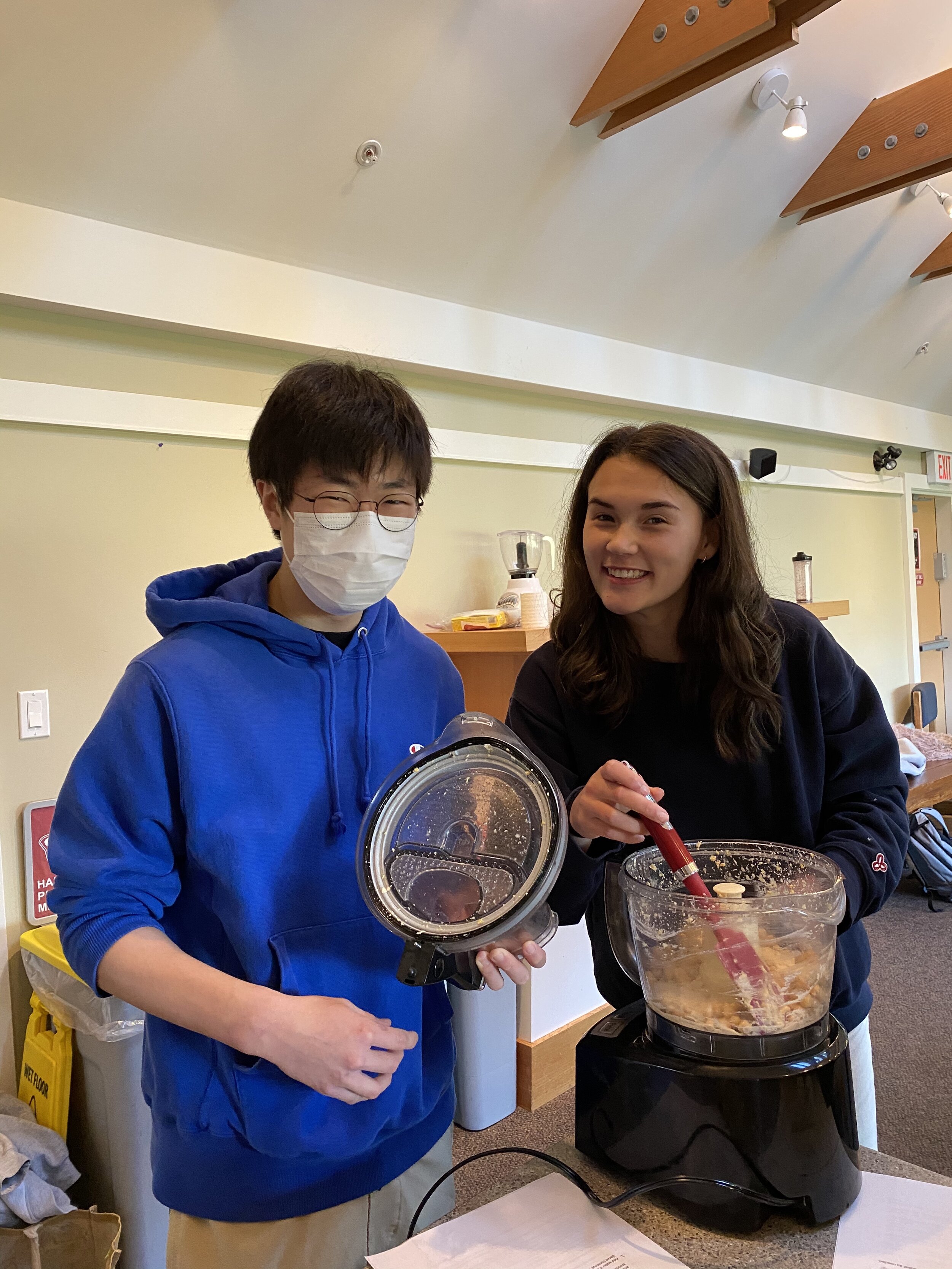
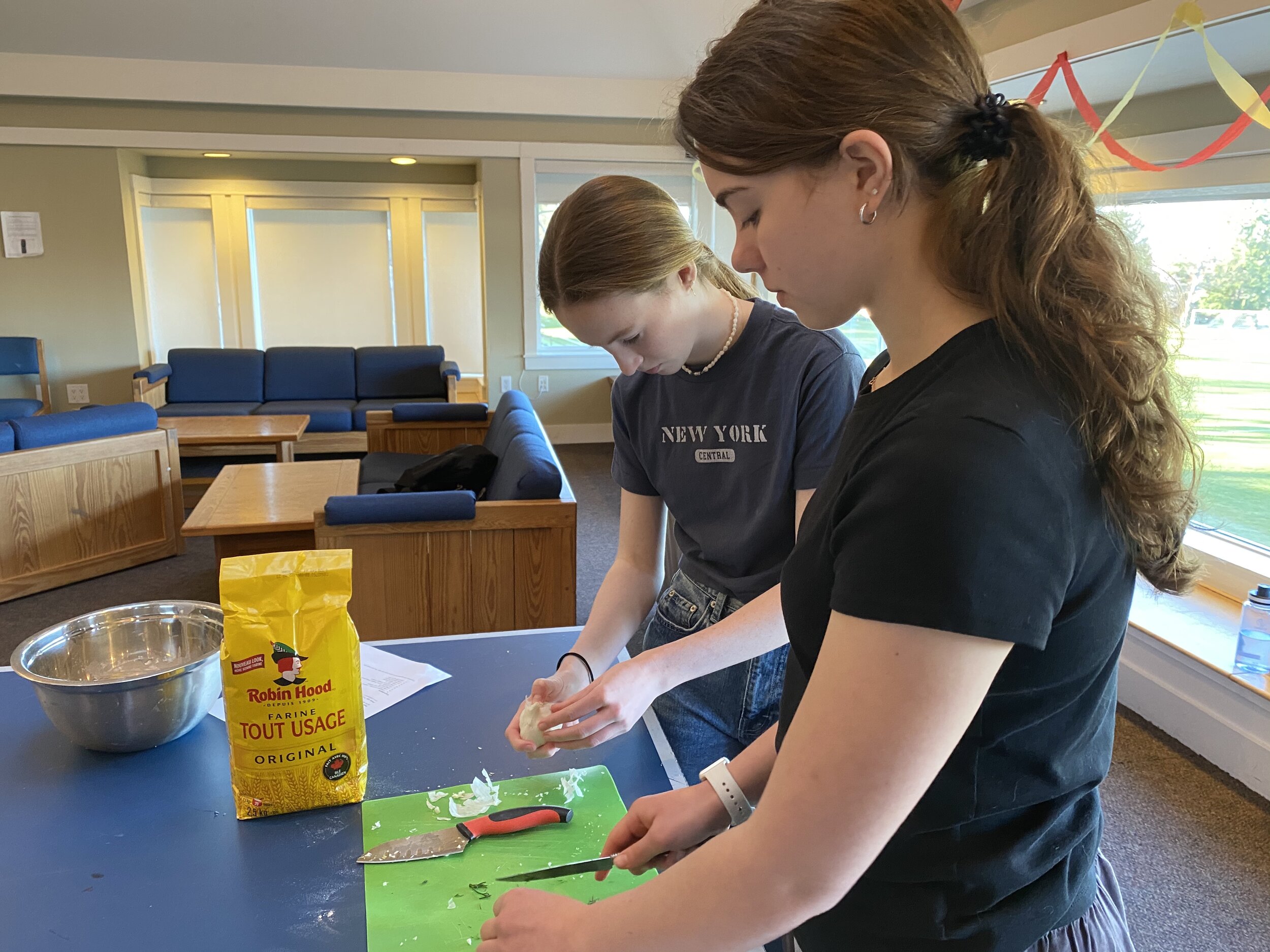
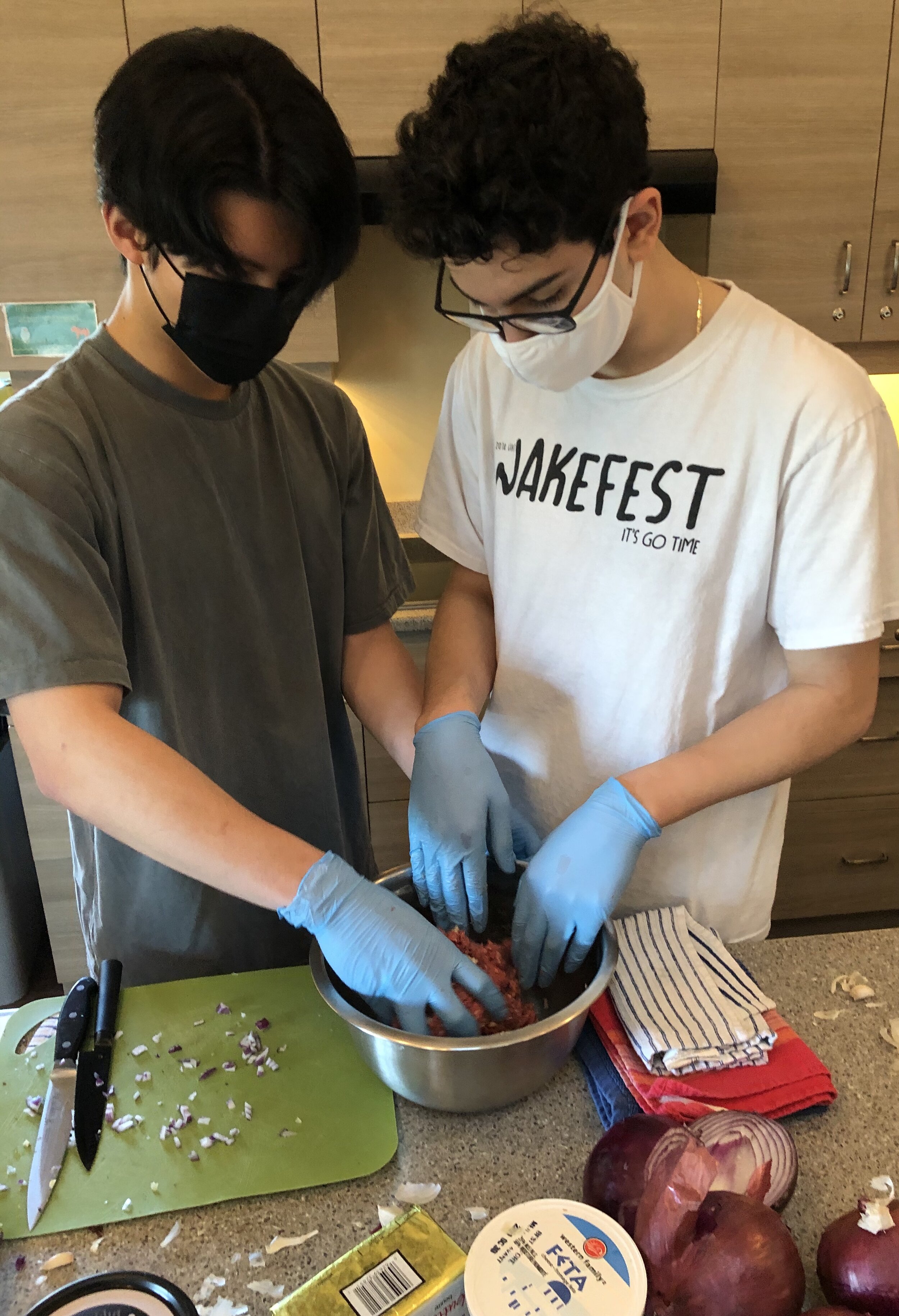
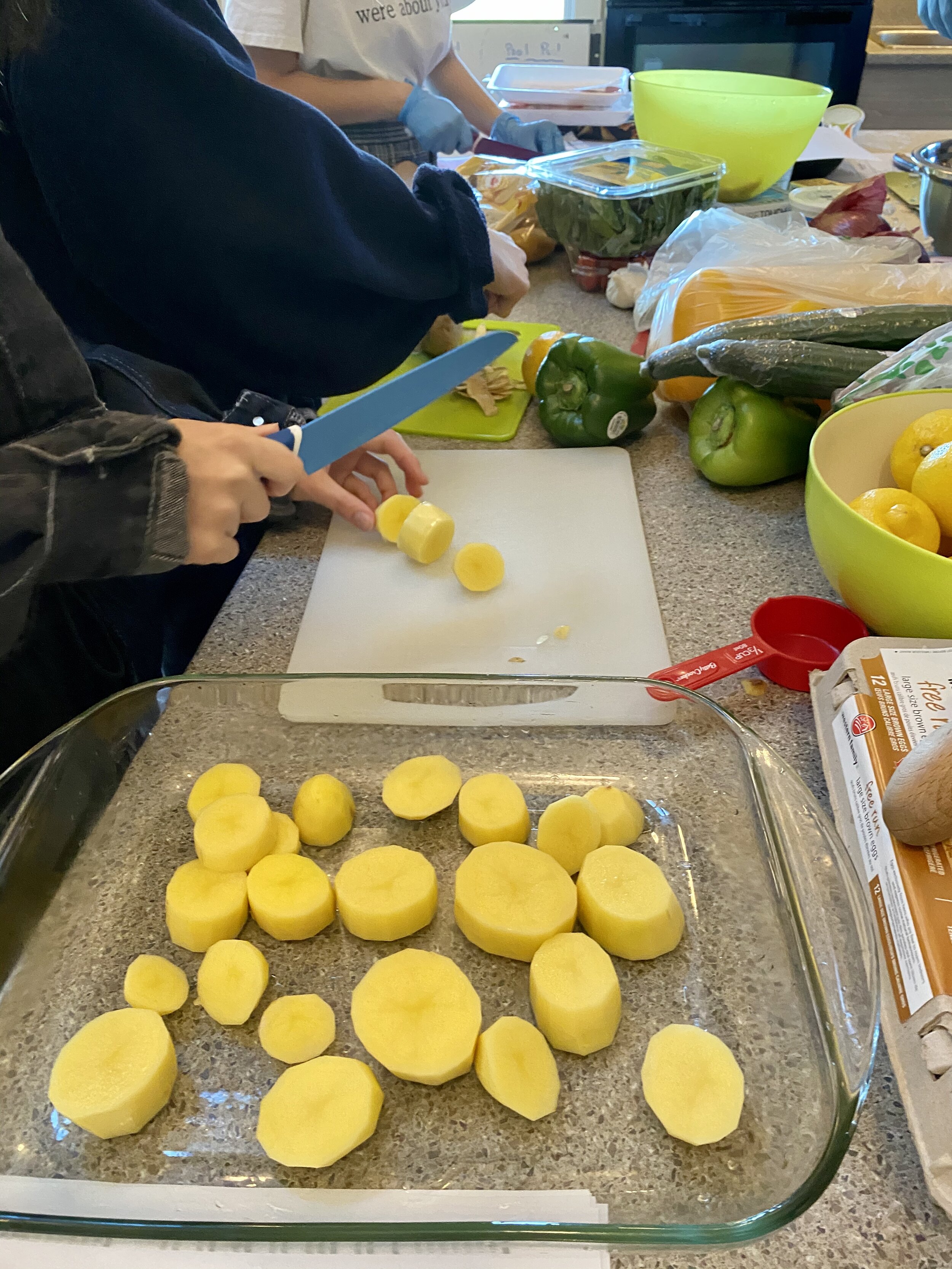
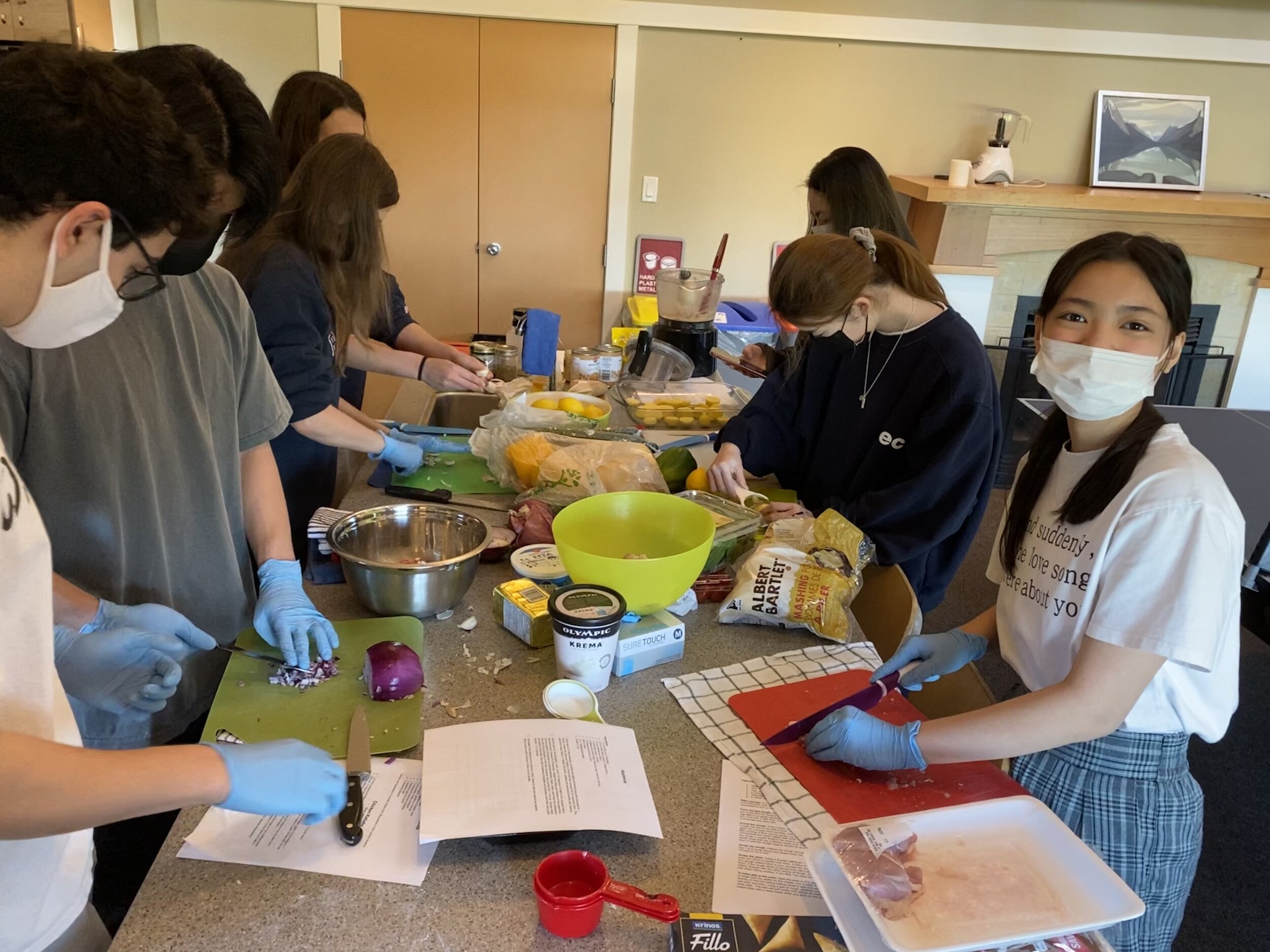
Words & Photos from Makenna A., Zephyr F., Emma H. & Jo-Jo T.
Makenna A.- Cooking AC1
Our first day started with us meeting in the Symons common rooms. Kenzi and Dom (the group leaders), split us into two groups and gave each group a list of groceries. We then headed to the grocery store and set off to find the food we needed. In the morning we decided to make some delicious smoothie bowls. To do this we made a very delicious homemade granola, and smoothie, we topped it all off with some fresh fruits. After feeling very full of our breakfast we headed straight into making the next dish seeing as we had a lot of meals planned. The next steps were making a dipping sauce for the salad and spring rolls we were making. Salad rolls were extremely difficult to wrap, it involved using a thin piece of rice paper that was flimsy and it was challenging to fit all the fillings in. For the spring rolls we got to use a deep fryer! We used a different wrap and filling to make the spring rolls. We took a small square of wrap for our spring rolls and added some egg mix to one corner to help it stick. Placing our filling diagonally in the middle we then folded in the two outside corners and rolled it up so it could be placed in the deep fryer.
We had taken some time to plan what our next day's meal plan would look like. We had decided that we were going to go with the theme of mini dishes, this would require a lot of work and a lot of planning. We gathered all the ingredients very fast at the grocery store and headed back fast so we could start cooking the food right away. The first thing on our agenda was to make the crepes, the batter was an easy task, so they didn’t take too long, we cooked them on a pan and topped them with Nutella, strawberries, bananas, and we also had a fruit salad to go with it. We then made mini quiches, we filled a pre-made tart with ham, spinach, peppers, ham, egg, and cheese and baked it in the oven. While they were cooking, we were working on the mini cheesecakes and sandwiches. This required us to grind up graham crackers to make the base of the cheesecakes and mix all the ingredients for the actual cheesecake part. The mini sandwiches were easy to make, we used white bread, tuna, and some veggies to make different types of sandwiches. After we had prepped everything, we took it all outside for a picnic in the sun. It was a super fun day, and we learned a lot!
Emma H. - Cooking AC 2
Day 4
Today’s cuisine was Greek. We split into different groups, all in charge of different dishes: Pita bread, tzatziki (a dip made with yoghurt, cucumbers, garlic, salt and olive oil), spanakopitas, Greek potatoes and beef koftas. We were initially slow as we had to get back into the groove of being in the kitchen after being away for six weeks. But we found our pace soon enough. The morning was spent chopping vegetables, dicing meat, soaking skewer sticks to prevent burning in the oven, creating dough and filling, and arranging skewers. The most arduous task were the Greek potatoes, which Kayla called ‘a labour of love’. She warned us not to eat lunch as we left for our lunch break, and at one o’ clock, it became apparent why. Metal trays laden with food covered the Timmis and Bolton kitchen counter. Many of the boarders had never tried Greek food before, and we enjoyed the new tastes immensely. The pita bread was warm and mellow, but the tzatziki was cool and refreshing. The spanakopitas, spinach pies that were similar in shape to samosas were hot and buttery and delectable. Greek potatoes didn’t taste like any other potatoes you’ve tried before. They had their own individual flavour, but were soft and easy to bite. The beef koftas were light, and they too stood out from other beef kebabs. The chicken and peppers and onions contrasted both colour-wise and neither of them covered the other. Somehow, we managed to finish all that we had cooked. With the food sitting heavily in our stomachs, many of us napped in the warm common room until it was time to clean up. The tastes of Greek cuisine are extremely unique and wonderful, and I encourage everyone to try them. It’s a long process, but the end result is worth it.
Day 4
Kayla warned us the day before that today would be a jam-packed day for us. We were learning how to make Italian food today -- homemade pasta and gnocchi with their sauces, croutons, Caesar salad, Italian soda, tiramisu, cheese-stuffed meatballs, and Kayla was even making focaccia bread for us. Similar to yesterday, we were divided into groups based on what we most wanted to make. Italian food was a lot more time and energy consuming to make than Greek food. There was not a moment where a pot or a pan wasn’t simmering on the stove. Pasta required a lot of mixing and kneading and rolling out, and gnocchi required mashing and burning our fingers when we peeled the skins off the boiled potatoes. Our first course was cheese-stuffed meatballs with tomato sauce and a slice of focaccia. There were sounds of oohing and aahing as we dug in. We then had the gnocchi with our homemade pesto, raspberry soda we made with our own syrup, and baked ravioli covered in puttanesca sauce. Then do our delight, we even had dessert! Creamy mascarpone and ladyfingers saturated with coffee layered in a glass dish, then placed in the fridge to set. Some of us crowded around the counter as Josie took it out and prepared to dust the surface with cocoa powder before serving it. Kayla advised her to put the cocoa powder into the sieve over the sink, to ensure an even coating of cocoa powder. Though a bit runny as we didn’t have enough time to let it set in the fridge, the tiramisu was delectable.
Our experiential days allowed us to take a breather from our rigorous academic lifestyle and when we return back to school, we did so with a refreshed and rested mind.
Zephry F. - Cooking BD
Day one:
Monday morning came with a hoard of students waiting at Crothall to board buses, all excited to arrive at their different experiential locations. Though the cooking groups usually use the schools common rooms as their kitchen, we were given the opportunity to learn foraging skills from a Sooke chef. The beautiful woods of Vancouver Island surrounded us and Upon arriving, we were greeted and taught how to identify which plants were edible and how they could be used in cooking.We were lead through a maze of bushes and into a clearing where a fire was already started and mushroom tea was being prepared. After warming up around the fire, we moved to the outside kitchen and began cutting an assortment of vegetables and fish. We learned how to make bread in an outside clay oven and what plants can be used in the salad dressing. Later, we enjoyed making shapes from the dough and personalizing our own bread. Towards the end of our day, we gathered in a circle and ate the wonderful meal of salmon, carrot pasta, fresh bread, and yams with stinging nettle dressing.
Day two:
We returned to the common rooms for day two of cooking and gathered to discuss what we wanted to make. We kicked things off with dumplings, learning how to make the dough and what to fill them with. We moved on to making churros with the left over dough and a sugar and cinnamon mix. We then began preparation for our final meal of ramen with mushrooms and an assortment of vegetables. The most significant lesson learned for many members of the group was simple things like how to prepare eggs or cook a chicken. Learning to cook is truly one of the most important experiential options as it teaches you skills that can be used in everyday life and for the future.